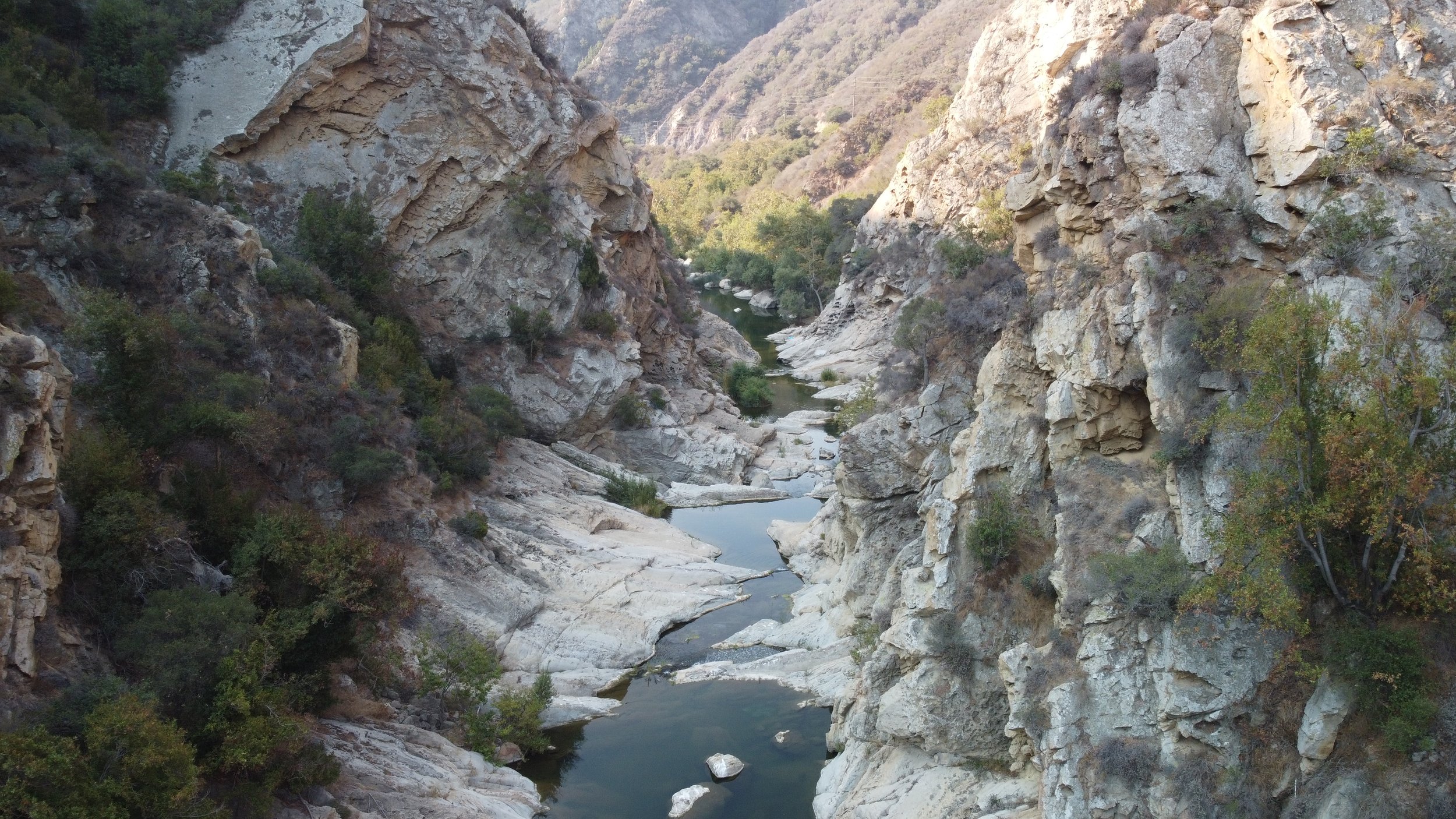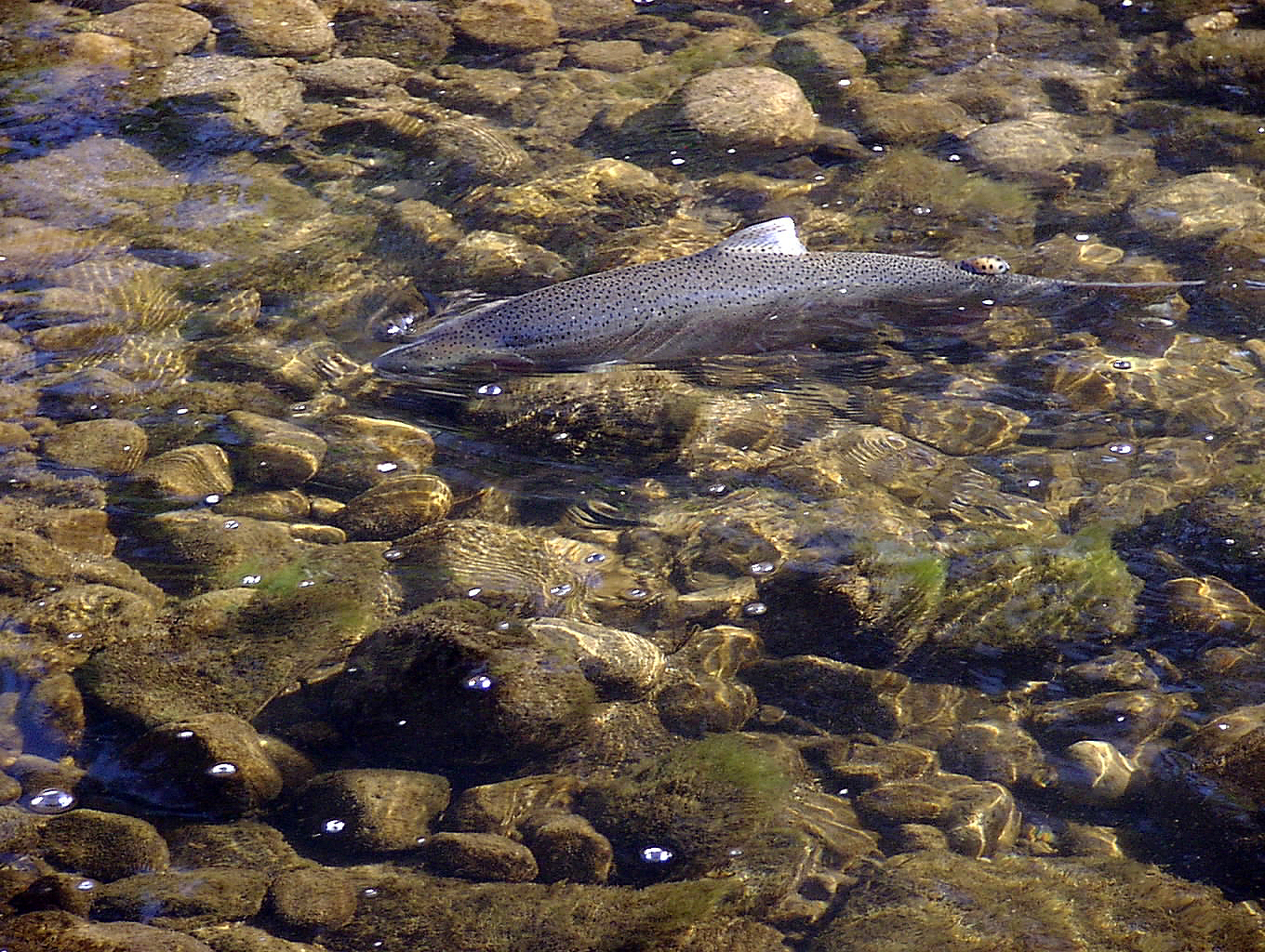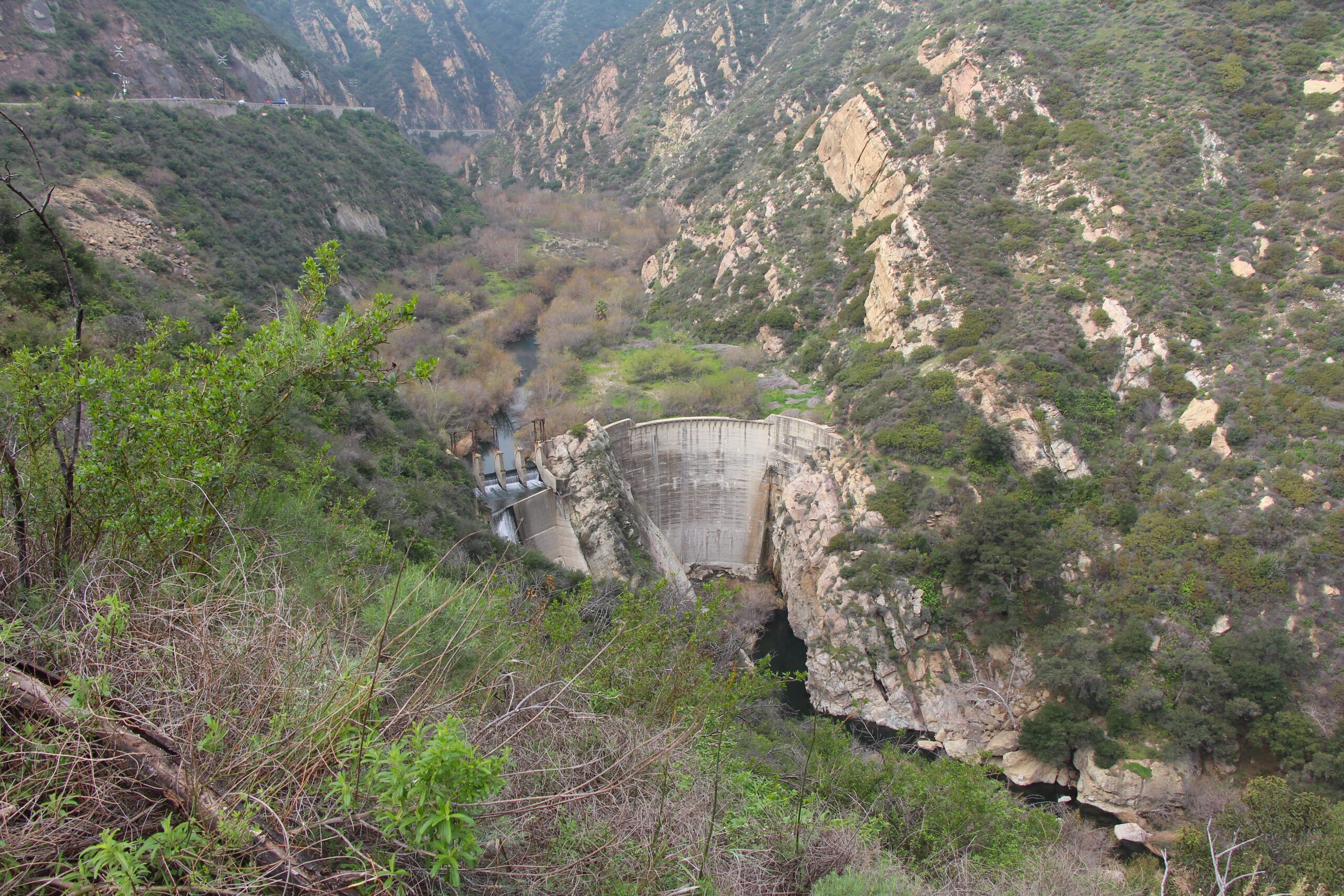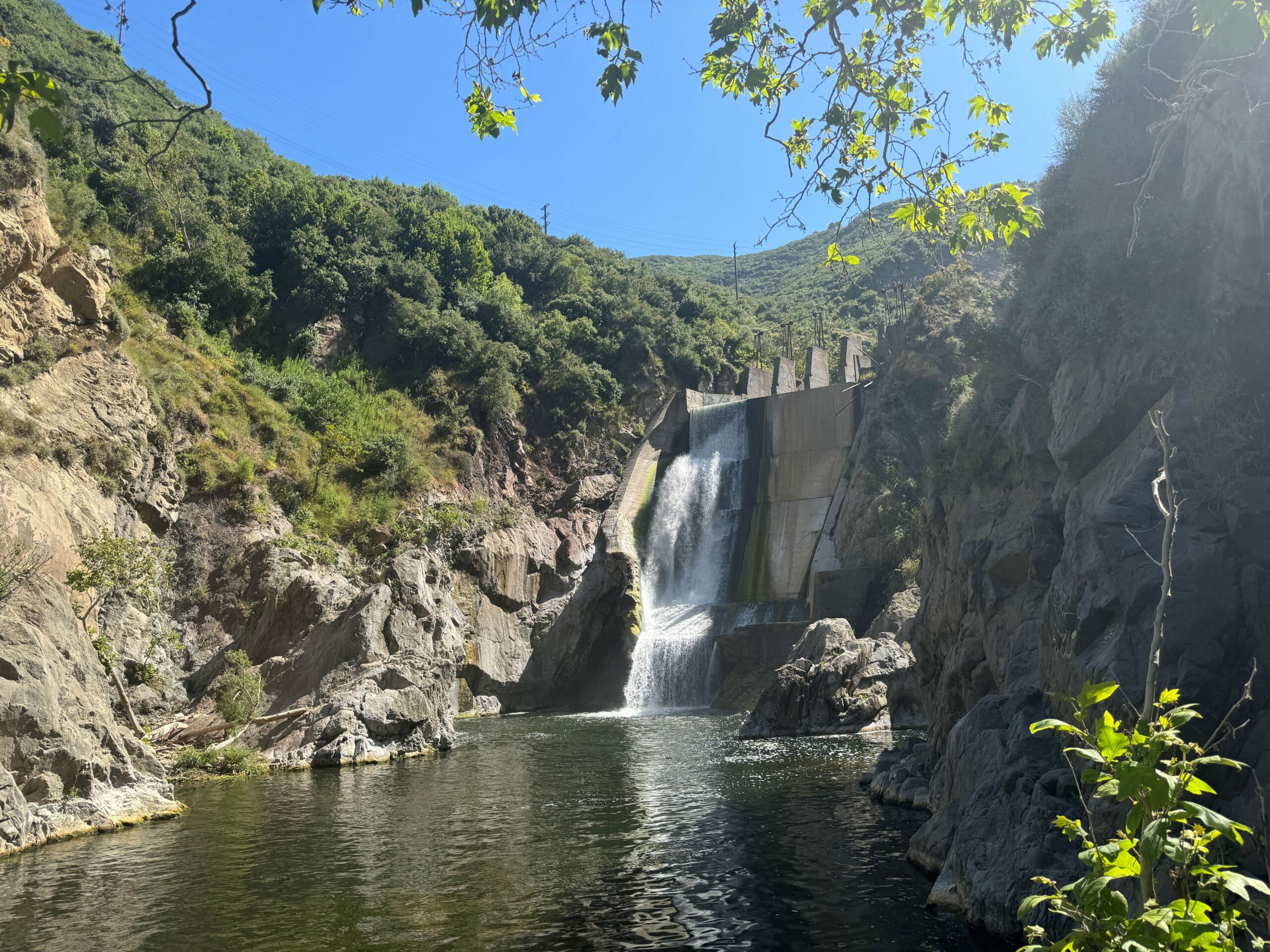Rindge Dam. Photo by RJ Van Sant, State Parks.

During the 1930s-1960s, large-scale hydroelectric dam construction surged across the United States. Today, California has thousands of these public and private dams, from small earthen barriers to large reservoirs hundreds of feet tall. More than 1,400 of those dams are large enough to fall under state safety regulations and provide critical water supply, flood control, and hydroelectric power. However, many of these dams have outlived their useful lifespans, no longer meeting community needs and posing a public safety risk due to their aged infrastructure.
Over time, we have seen the impacts of dams on ecosystems and endangered species. Environmental research from the UC Davis Center for Watershed Sciences indicates that the environmental costs of dams are high and include degraded watershed health, harmed fish populations, threatened public safety, and an overall degrading of complete ecosystems which hold cultural importance for many.
California Trout (CalTrout) is a nonprofit organization with over 60 large scale conservation projects restoring freshwater ecosystems. CalTrout’s Top 6 Dams Out identifies dams across six watersheds that should be removed because of their impacts on watershed ecosystems and endangered species.

Malibu Creek. Photo by Bernard Yin.
One dam on the list is Rindge Dam in Los Angeles, located three miles upstream of the Pacific Ocean on Malibu Creek in Malibu Creek State Park. The100-feet tall and 120-feet wide dam was built between 1924 – 26 by Malibu’s Rindge family, but the reservoir behind the dam filled with sediment by 1947 and the dam was abandoned in 1967.
For over a century, Rindge Dam has been an insurmountable barrier for local wildlife, particularly endangered Southern California steelhead that cannot access high quality habitat necessary for spawning in the headwaters of Malibu Creek, a summit-to-sea river system. Rindge Dam has also prevented 780,000 cubic yards of natural sediment from flowing downstream to replenish the beaches below along the Malibu coastline.

Southern California steelhead. Photo by Mark H Capelli.
After two decades of studies and stakeholder reviews led by the US Army Corps of Engineers, the Malibu Creek Ecosystem Restoration Project (MCERP), which will remove Rindge Dam, has advanced to the preconstruction, engineering, and design phase. California State Parks is leading the project with CalTrout managing its public outreach. With support from a team of consultants, surrounding communities, and local Tribes, the project team is developing a blueprint for removing the dam and for the removal/mitigation of eight upstream barriers along the 18-mile Malibu Creek. The project is expected to be completed by 2035. Once completed, this landscape-scale restoration project will reconnect the aquatic corridor and build climate resiliency in a remarkably biodiverse watershed that is largely under public ownership.
Dam removal is an expensive and labor-intensive process, but the ecosystem benefits can far outweigh the costs. In late 2024, the last of four dams on the Klamath River was removed, opening hundreds of miles of habitat for Chinook salmon, coho salmon, and steelhead, improving water quality for wildlife and people, particularly the cultural life-ways of Indigenous peoples who have lived along the river since time immemorial. Dam removal on the Klamath River is the largest US dam removal project in history.

100 Foot-high Rindge Dam. Photo by RJ Van Sant, State Parks.
CalTrout’s monitoring program at the former site of Iron Gate Dam has documented thousands of salmon and steelhead returning home since their ancestral waters were unlocked. In Malibu, a similar opportunity can be realized, restoring native Southern California steelhead to abundance and reviving an entire watershed ecosystem from headwaters to sea.
Judi Uthus is the Public Engagement Specialist with California Trout and a guest writer for Sierra Club’s 2025 Water Issue. You can reach Judi at juthus@caltrout.org.

